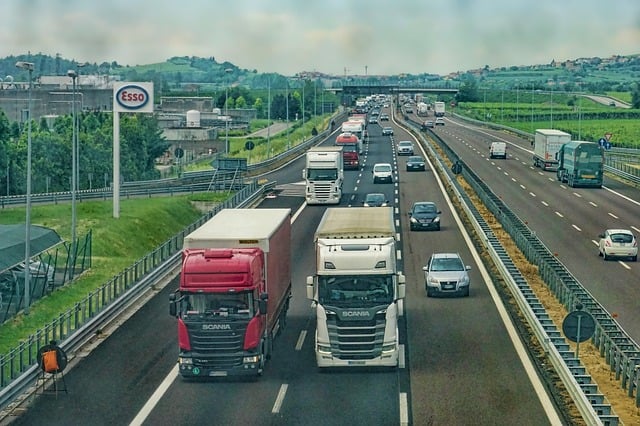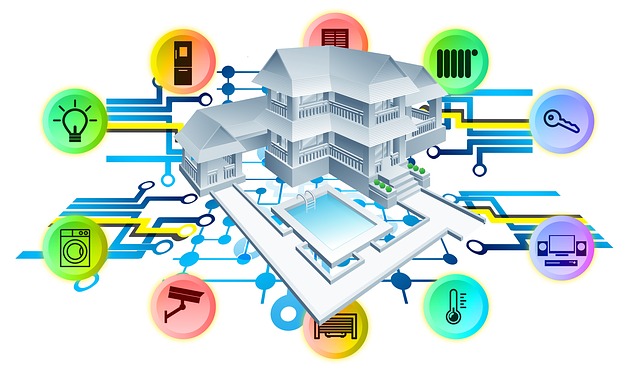
An effective accident prevention program requires proper job performance from everyone in the workplace. As an owner or manager, you must ensure that all employees know about the materials and equipment they work with, known hazards and how to control those hazards.
Each employee needs to know the following:
- No employee is expected to undertake a job until he or she has received proper job instructions and is authorized to perform that job.
- No employee should undertake a job that appears unsafe.
You may be able to combine safety and health training with other training sessions, depending upon the types of hazards present in your workplace.
Here are some actions to consider:
- Ask your OSHA state consultant to recommend training for your worksite. The consultant may be able to conduct training while he or she is there.
- Make sure you have trained your employees on every potential hazard that they could be exposed to and how to protect themselves against those hazards. Then, verify that they really understand what you taught them.
- Pay particular attention to your new employees and to employees who are moving to new roles within the organization. Since they are learning new operations, they are more likely to get hurt.
- Train your supervisors to understand all the hazards faced by the employees and how to reinforce training with quick reminders and refreshers, or with disciplinary action, if necessary.
- Make sure that your top management staff understands their safety and health responsibilities and how to hold subordinate supervisory employees accountable for their actions.
Read more

Self-driving vehicles may feel like something that will only be available in the distant future, but autonomous technology is already having an impact on the transportation industry. Many motor carriers are promoting new equipment to attract tech-savvy drivers, and advanced safety sensors are helping decrease accidents on the road.
Over 30 automakers and technology companies are working to make trucks fully autonomous, and many states have already passed self-driving legislation that allows for testing on public roads. But, even though this technology offers motor carriers a way to increase efficiency and improve safety, there are a number of topics your business needs to consider before adopting self-driving trucks.
The Different Levels of Automation
Most of the technology used in autonomous vehicles is an evolution of common safety features that use vehicle-mounted cameras and sensors, such as automatic brakes, lane departure systems and blind spot alerts. However, self-driving technology takes this concept a step further by having these systems work together to perform some or all driving functions.
Because there are multiple self-driving systems in development that offer different levels of autonomy, most companies use a system developed by SAE International to classify levels of autonomous vehicles. Levels 0-2 mainly define limited control systems that are commonly available in consumer and commercial vehicles:
- Level 0: No automation – The driver performs all driving tasks, but automated system issue warnings may be present.
- Level 1: Driver assistance – The vehicle and driver may share control in limited circumstances, such as adaptive cruise control and parking assistance. However, the driver must be ready to retake control at all times.
- Level 2: Partial automation – The vehicle has combined automatic functions (such as controlling acceleration and steering simultaneously), but the driver must be constantly engaged and aware of the surrounding environment.
Levels 3-5 define vehicles that are commonly referred to as autonomous or self-driving:
- Level 3: Conditional automation – A driver must still be present, but doesn’t have to monitor the environment. However, they must be ready to take control at all times and with no notice.
- Level 4: High automation – The vehicle can perform all driving functions under certain conditions, and switching control back to the driver may be optional.
- Level 5: Full automation – The vehicle can perform all driving functions at all times.
How Can Self-driving Trucks Help Carriers?
Self-driving trucks could help motor carriers address a number of common issues:
- Safety – Properly functioning self-driving systems operate without the chance of human error and can react to changing traffic patterns faster than a regular driver.
- Driver shortage – Regulations likely won’t allow vehicles to operate without a driver in the near future. However, the technology will attract applicants who don’t want to spend long stretches of time in full control of a commercial truck.
- Increased efficiency – Autonomous technology can give carriers real-time information on location, maintenance status and traffic patterns in order to increase efficiency and better manage fleets.
- Cost reductions – Motor carriers can reduce costs by sending autonomous trucks on more fuel-efficient routes or by platooning the vehicles together to reduce air drag.
What Risks Does This Technology Present?
Although autonomous technology is advancing rapidly, there are still a number of risks and obstacles to overcome before the vehicles can be widely adopted:
- Public perception – Advanced sensors generally make self-driving trucks safe, but recent high-profile collisions and fatalities during tests have lowered the public’s opinion of the technology.
- Long-term employment – Autonomous technology will help to attract new drivers in the near future, but some experts believe that fully independent vehicles may someday eliminate millions of jobs.
- Liability – The liability of an accident involving human-driven vehicles is fairly easy to judge. However, self-driving trucks bring a nonhuman factor into the equation that makes it difficult to determine if an operator, technology developer, manufacturer or other party is at fault for an accident.
- Compliance – Individual states, cities and jurisdictions currently manage laws regarding the testing and use of self-driving trucks, making interstate commerce more complicated. However, the FMCSA recently requested feedback on the regulations that would have to be updated, modified or eliminated to safely allow for the use of autonomous vehicles. Key questions discussed by the agency include the following:
- How will motor carriers ensure automatic systems are functioning properly?
- What changes, if any, should be made to distracted driving regulations?
- How will enforcement officials determine a vehicle’s SAE classification level, and would easily identifiable classification signage negatively affect other drivers?
- How should a driver’s hours of service be recorded when using an automated driving system?
Considering Your Options
As self-driving vehicles continue to develop, your business should carefully consider how both the advantages and risks of this new technology will impact its operations. Contact us at 831-661-5697 today for help analyzing your unique risk exposures.
Read more

Inspect for Water Damage
Melting snow and ice can increase water flow around your property, so carefully inspect the entire building for water damage. Check the exterior foundation, interior walls and windows for moisture, leaks or condensation, and clear out and repair any damaged gutters and downspouts.
Check the Roof
Winter storms can damage your roof, but you may not notice the damage until the roof starts to leak. Perform a detailed inspection of the roof and note any repairs you need to make.
Touch Up the Exterior
Cold winter weather can cause paint to chip, and flying debris can dent siding. Walk around the building, note any damaged paint or siding, and fix the areas. Sometimes, a simple touch up is all that’s needed rather than refinishing the entire building.
Repair the Parking Area
If freezing temperatures created cracks or holes in the parking lot or sidewalks, fix the problem areas. You’ll also want to power wash the area to remove dirt, mud or other debris, repaint any faded lines and repair broken signs. With a clean parking area, you reduce liability and improve visual appeal.
Wash the Windows
Remove winter grime and buildup on the exterior and interior windows. Clean windows boost productivity and improve the appearance of your commercial building.
Boost Ventilation
Open windows and air out the stuffy building if possible. You may also inspect and clean the HVAC system and install fans or dehumidifiers in damp areas as needed.
Improve Curb Appeal
Fallen branches, debris and litter affect your property’s curb appeal and can create hazards for employees and visitors. Remove any debris, and trim trees, shrubs and bushes to reduce hiding places for burglars and future damage risks. Consider planting flowers and grass, too, as you improve your property’s curb appeal and safety.
Perform Pest Control
Warmer temperatures may attract bugs, insects and rodents to your property, so apply a pest spray around the building’s perimeter, and close any holes that may allow animals to enter the building. You may also want to treat any ponds, bird baths or other standing water with Mosquito Dunk or a similar product.
Assess Insurance
Your commercial property insurance protects your company, so schedule an assessment. Ensure you have adequate coverage for your needs as you look forward to the rest of the year.
This spring, you can perform maintenance on your commercial building to improve its appearance and functionality. These tips also reduce your liability and protect your employees and clients.
Read more

Whether you stand all day, operate heavy machinery or handle chemicals, you need to protect your feet as you work. Several foot safety tips reduce injuries and help you maintain a safe work environment.
When to Wear Safety Footwear
Safety footwear protects your feet against numerous injuries, including punctures, impacts, electrical shock and compression. If you work in any hazardous work environment, you probably need to wear safety footwear as part of your daily uniform. Protective shoes also protect your feet if you suffer from weak ankles or other medical conditions.
Available Types of Safety Footwear
Depending on your job and preferences, you may select safety boots or sneakers. Available in a variety of styles and colors, the best safety shoes include a CSA certification and may include:
Safety-toe – features a special toe covering that protects the foot from dropped objects
Steel insole – stabilizes feet and protects them from joint and bone injuries or problems
Metal instep – provides a barrier against glass, nail and other sharp object punctures
Metatarsal protection – reduces injuries to your upper feet and internal bones
Electric protection – absorbs shock through specially made soles
Heat resistant – resists heat-related injuries
Water resistant – repels water and keeps feet dry
Nonslip – improves traction on various surfaces
Where to Purchase Safety Footwear
Your employer may provide strict guidelines and limitations about exactly which safety shoe you may wear, including where you may purchase this gear. If you can select the safety shoes you wear, check specialty footwear stores or online retailers. Because you want to protect your feet, select only the right shoes for your job and feet. Price should be secondary as you promote safety.
How to Fit Your Safety Footwear
When trying on safety footwear, ensure a proper fit.
- Try on shoes in the afternoon to accommodate swelling that occurs naturally during the day.
- Wear your regular work socks and any special supports.
- Ensure ample toe room since the shoes typically do not stretch with wear.
- Check for snugness around the heel and ankle.
- Walk around a bit to check for comfort.
Care Instructions
Most safety footwear requires ongoing care and maintenance. Before you wear them for the first time, apply a water-resistant coating. Every day, inspect your shoes for damage, including sole cracks, leather breaks or toe cap exposure. Always replace your safety footwear if you notice signs of wear or damage that you cannot repair and after a puncture, impact or other event that may compromise the shoe.
Protect your feet at work when you wear the right safety footwear. Talk to your employer and check OSHA resources as you purchase, maintain and wear shoes that protect your feet every day.
Read more

As a homeowner, one of your top priorities is keeping your property and family safe from intruders. With the advent of smart homes and new technology, home security is easier and more affordable than ever.
The following are some new technologies that can protect you and your loved ones from criminals:
Doorbell cameras — Doorbell cameras are a great way to see who is at the door before you open it. This is especially useful if you have children who are frequently home alone.
Smart door locks — Smart door locks allow you to lock or unlock your doors remotely. This can be helpful if you forget to lock your doors before you leave the house.
Motion sensors — Homeowners can attach motion sensors to doors and windows. Even the slightest movement can trigger these devices and alert you to intruders.
Above all, it’s important to have a strong security system in place. These systems should include Wi-Fi-enabled cameras, smart smoke detectors and an alarm system that notifies the authorities in an emergency.
Read more

The Occupational Safety and Health Administration (OSHA) recently unveiled its top 10 most frequently cited violations. The agency reports the leading causes of workplace injuries during its fiscal year (October through the following September).
The 2017 top 10 list of most frequently cited standards did not change significantly from 2016, with fall protection violations remaining at the top of the list. In fact, the top five most cited violations remained the same.
- Fall Protection (29 CFR 1926.501): 6,072 citations
Falls from ladders and roofs still account for the majority of injuries at work. Identifying fall hazards and deciding how to best protect workers is the first step in eliminating or reducing fall hazards. This includes, but is not limited to, guardrail systems, safety net systems and personal fall protection systems in conjunction with safe work practices and training.
- Hazard Communication (29 CFR 1910.1200): 4,176 citations
In order to ensure chemical safety in the workplace, information must be available about the identities and hazards of all chemicals in use. OSHA standard 1910.1200 governs hazard communication to workers about chemicals that are both produced or imported into the workplace. Both the failure to develop and maintain a proper written training program for employees, as well as the failure to provide a Safety Data Sheet for every hazardous chemical, top the citation list.
- Scaffolding (29 CFR 1926.451): 3,288 citations
According to the Bureau of Labor Statistics, the vast majority of scaffold accidents can be attributed to the planking or support of the scaffold giving way, or to employees slipping or being struck by falling objects. The dangers associated with scaffold use can be controlled if employers strictly enforce OSHA standards.
- Respiratory Protection (29 CFR 1910.134): 3,097 citations
Standard 1910.134 provides employers with guidance in establishing and maintaining a respiratory inspection program for program administration, worksite-specific procedures and respirator use. Respirators protect workers from oxygen-deficient environments, harmful dusts, fogs, smokes, mists, gases, vapors and sprays. These hazards could cause cancer, lung impairment, and other diseases or death.
- Lockout/Tagout (29 CFR 1910.147): 2,877 citations
Lockout/tagout (LOTO) refers to specific practices and procedures that safeguard employees from the unexpected startup of machinery and equipment, or the release of hazardous energy during service and maintenance activities. Workers who service mechanical and electrical equipment face the greatest risk of injury if LOTO is not properly implemented. Workers injured on the job from exposure to hazardous energy lose an average of 24 workdays for recuperation.
- Ladders (29 CFR 1926.1053): 2,241 citations
These types of violations typically occur when ladders are used for purposes other than those designated by the manufacturer, such as when the top step of a stepladder is used as a step, when ladders are not used on stable and level surfaces, or when defective ladders are not withdrawn from service. Most employee injuries can be attributed to inadequate training and a disregard for safe operating procedures.
- Powered Industrial Trucks (29 CFR 1910.178): 2,162 citations
Each year, tens of thousands of injuries related to powered industrial trucks (particularly forklifts) occur. Many employees are injured when lift trucks are driven off of loading docks or when they fall between docks and unsecured trailers. Other common injuries involve employees being struck by lift trucks or falling from elevated pallets and tines. Most incidents also involve property damage, including damage to overhead sprinklers, racking, pipes, walls and machinery.
- Machine Guarding (29 CFR 1910.212): 1,933 citations
When left exposed, moving machine parts have the potential to cause serious workplace injuries, such as amputations, burns, blindness, and crushed fingers or hands. The risk of employee injury is substantially reduced by installing and maintaining the proper machine guarding.
- Fall Protection Training Requirements (29 CFR 1926.503): 1,523 citations
Because falls represent such a serious risk, employers must train employees to identify potential fall hazards and follow procedures in order to minimize the chance of a fall. According to OSHA, employees should be trained to use fall protection methods, such as guardrails, safety nets and personal fall arrest systems, and employers should verify that employees have been trained by preparing written certification records.
- Electrical—Wiring Methods (29 CFR 1910.305): 1,405 citations
Electricity has long been recognized as a serious workplace hazard. OSHA’s electrical standards are designed to protect employees exposed to dangers, such as electric shock, electrocution, fires and explosions. Electrical wiring violations that top the electrical citation list include the failure to install and use electrical equipment according to the manufacturer’s instructions, failure to guard electrical equipment, failure to identify disconnecting means or circuits, and not keeping workspaces clear.
Read more






